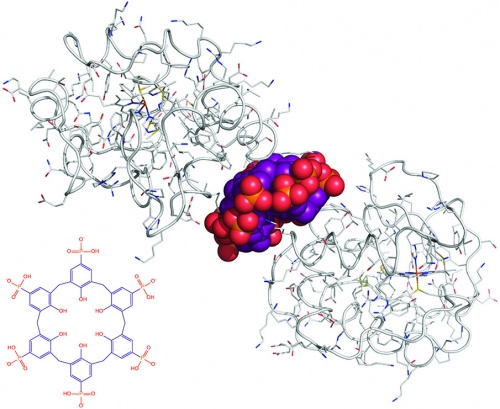The self-assembly of proteins into ordered nanostructures such as the dynamic scaffolds that give different cell types or viruses their unique shapes, is a hallmark of many biological systems. Researchers are now looking at ways to repurpose this remarkable capability to produce functional nanomaterials tailored to specific applications. Directed assembly of engineered protein nanostructures would be of considerable interest for targeted drug delivery, vaccine design, and plasmonics, to give just a few examples.
Dr. Peter Crowley’s Laboratory (NUI Galway, Ireland) is studying controlled protein assembly, which is the cornerstone of bionanotechnology. But even the simplest of protein-protein interactions are complex and difficult to control. The main focus is on “molecular glues” that facilitate protein-protein contacts. Using X-ray diffraction data collected to 1.8 Å at beamline PROXIMA 2A scientists from this group solved the structure of a protein dimer mediated by a phosphonated calixarene1. This compound, developed by collaborator Prof. Colin Raston (Flinders University, Australia), forms a molecular “disc” onto which two proteins can bind (Figure 1). Lysine residues are central to the protein-calixarene interaction, as was observed previously with a related compound. The high resolution crystal structure provides insights into how calixarenes can be designed to drive protein assembly in solution.

Figure 1: The crystal structure of cytochrome c bound to phosphonato-calix[6]arene reveals an assembly of two protein molecules bound to a dimeric disc of the calixarene.
Future research will examine how modified calixarenes can be directed to bind proteins of interest for biotech applications.
This research was funded by Science Foundation Ireland.
1- Calixarenes: cyclic molecules with a cup shape derived from phenol and aldehyde. They have hydrophobic cavities that can hold smaller molecules or ions.
